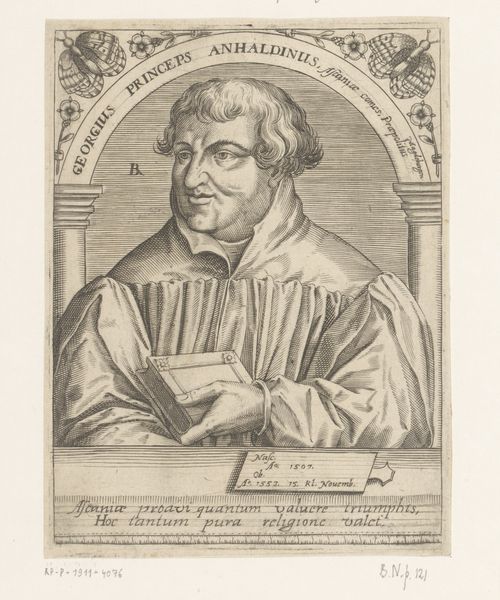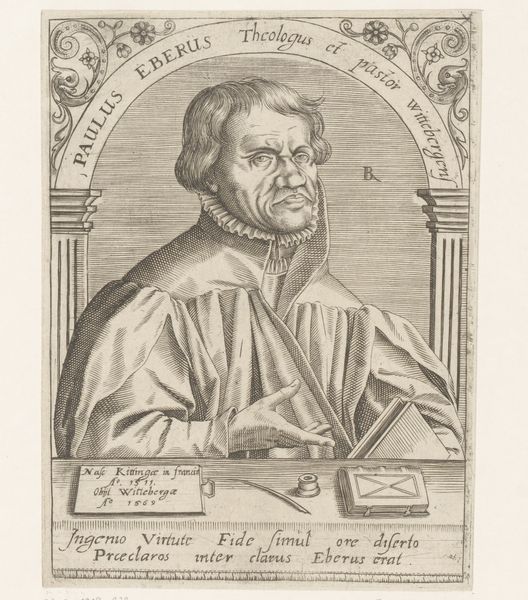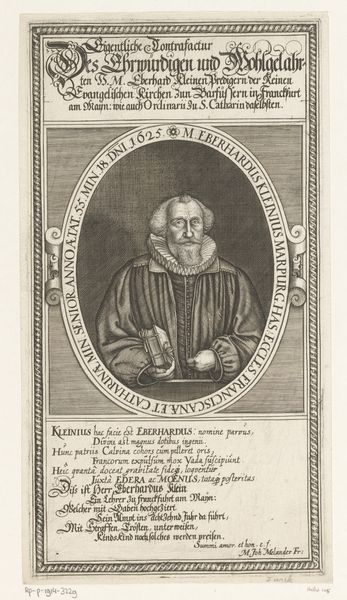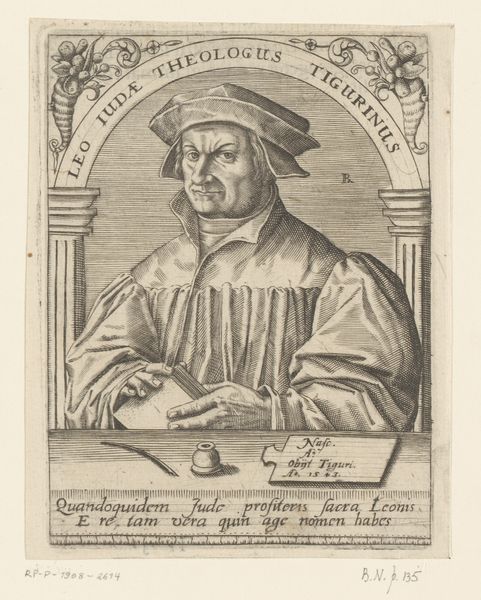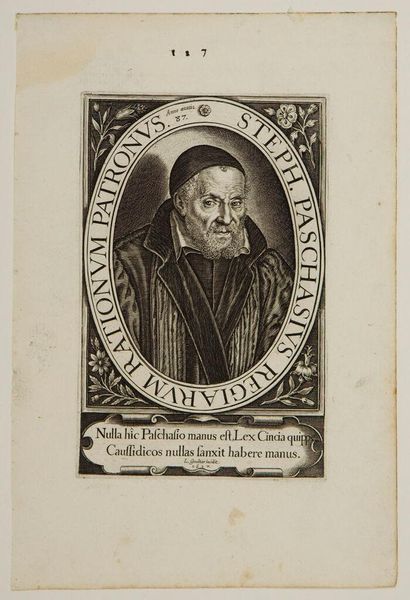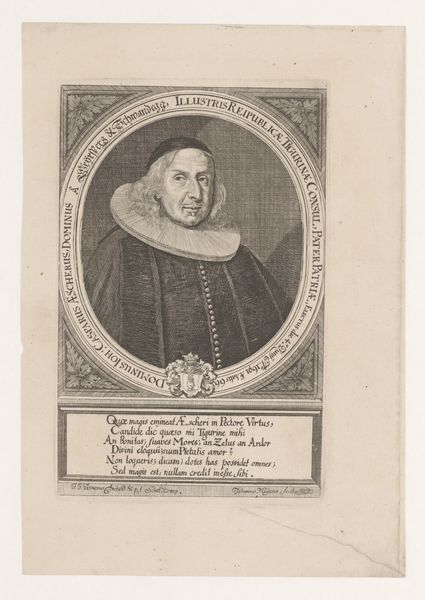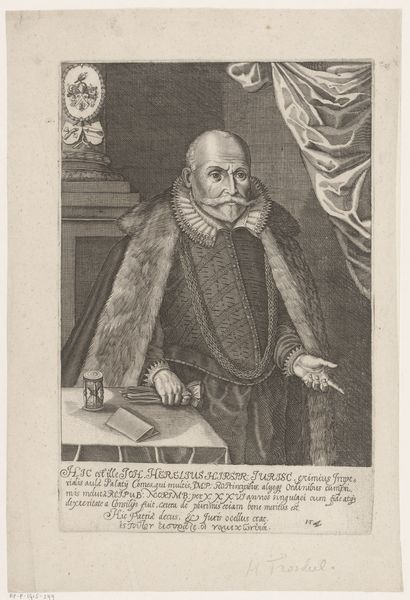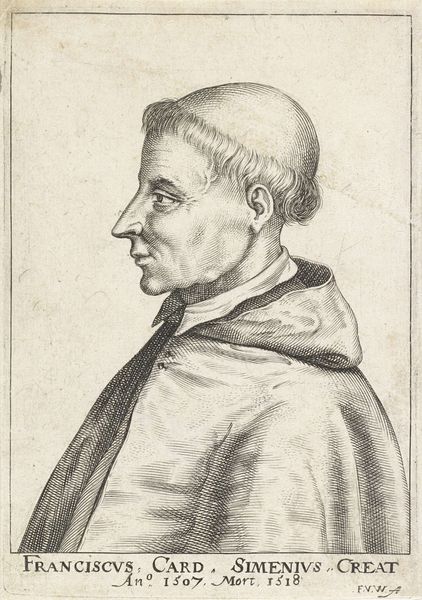
paper, engraving
#
portrait
#
old engraving style
#
mannerism
#
paper
#
engraving
Dimensions: height 156 mm, width 105 mm
Copyright: Rijks Museum: Open Domain
Curator: This engraving from 1611 by Willem van Swanenburg is titled "Portret van Cornelis Musius." The print is on paper, typical of the period. Editor: The weight of that fur stole almost pulls the figure down, doesn’t it? Look at the meticulous detail—every individual strand seems rendered with obsessive precision. It creates a strange tension. Curator: Indeed. Musius, as a pastor and prior, was a key figure during a time of significant religious and political upheaval. Prints like this served to solidify reputations, spread likenesses among a wider public, and emphasize specific virtues. Editor: Right. This wasn’t about capturing fleeting likeness. Engraving inherently demands a structured approach, forcing us to consider the labor and calculated execution of image production at the time. The cross-hatching... it’s almost industrial in its repetition. Curator: The inscription further emphasizes this. He’s not just portrayed; he’s presented as a “testis verae fidei,” a testament to true faith. These images reinforced established hierarchies and conveyed morality, quite visibly and physically. Editor: Making the image as a tool. I notice that it has to be considered within the wider network of workshops at the time. What was the economic position of Van Swanenburg, compared to his commissioner? How did the artistic practices influence how this subject wanted to be viewed, and in what context? Curator: Absolutely, that workshop context matters. Van Swanenburg positioned himself in a rich art historical scene, and benefitted in many ways from his master Cornelis Cort. He made himself well known with such popular and sought-after prints. Editor: It's powerful how this work makes you conscious of its own construction. It’s more than just a portrait; it's a manufactured image reinforcing a very particular set of social and spiritual values. The artist used tools, labor and skills to project a kind of cultural manufacture. Curator: I agree, seeing it through that lens illuminates much about the societal role images played then, and their continued impact on how we understand history. Editor: Yes, the raw material, skill, and intention – seeing it as a deliberately created object makes me think about the economic factors driving artistic production in that era, more generally.
Comments
No comments
Be the first to comment and join the conversation on the ultimate creative platform.
